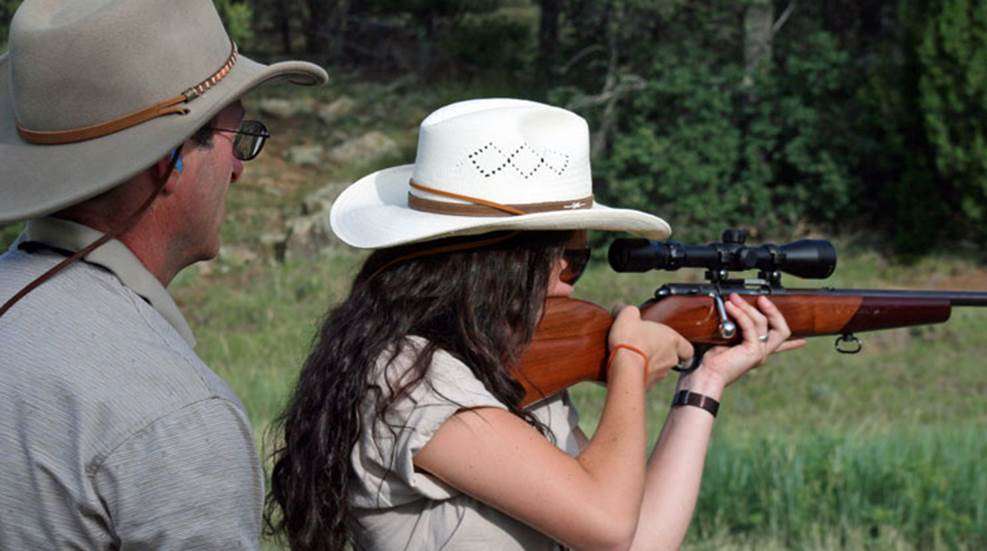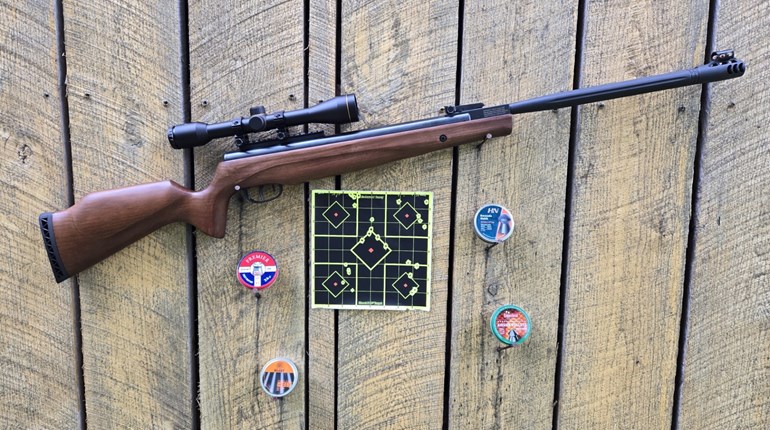
We all know that if we can educate more people about how the fun and safety of the shooting sports, then we will reduce the threat to our Second Amendment. Many have taken up the call to introduce people to shooting, but are we doing it in the most effective manner, so that we retain those potential new shooters for years to come? My decades as a hunter education instructor and youth outdoor club leader have given me some tips on how to keep new shooters coming back.
1. Start small and successful.
After training the new shooter on how to always observe the gun safety rules, we need to set them up for success. That means they need to have fun and actually hit the target often to enjoy it. I always size up the new shooter. I look to see how if they can reasonably hold up a rifle, shotgun or pistol, and then I choose a firearm that matches their size and strength to make sure this does not adversely impact their abilities.
For example, some of the parents of the youth I introduce to shooting want to try shooting too. If they tell me, “Wow, this gun is heavy,” I immediately select a different gun or give them a shooting table to use. If the gun is too heavy, they will struggle. If they are struggling, they are less likely to hit the target, and if they don’t hit the target that often, they are less likely to want to keep trying. (Of course, always remind new shooters this is a process and they’ll keep seeing improvements with practice.)
I also start new shooters out with small-caliber or -gauge firearms so that they are not bothered by muzzle blast, recoil or the noise. Those three things can make new shooters skittish and fearful. Using an airgun, .22 caliber or 20 gauge is a good place to start. You can always work upwards in power from there. This also allows you and the new shooter time to refine and ingrain the basic shooting skills such as trigger control, breathing, stock or hand holds and sight picture.
2. Start close!
When I am teaching a new shooter, I never start out with them shooting targets far away. We always start at 10 to 25 yards. Missing a target at longer range is common for new shooters—and much harder for the instructor to diagnose. Starting at close range also builds confidence as those great impact points stand out clearly to the eye and create a desire to keep shooting. It’s always easy to move the target out to longer ranges once the shooter proves they have the basics down.
3. Be flexible.
Some new shooters try shotgun shooting for the first time and are instantly hooked. Some new shooters feel the same way about handguns. If your new shooter is not enjoying clays shooting with a shotgun, let them try hitting swinging targets or interactive targets with a rifle or pistol. Not everyone enjoys all shooting disciplines at first. Give them a variety of opportunities to determine where their enjoyment falls.
4. Create opportunities for the future, too!
It is nice to take a buddy out shooting and let them shoot your guns once or twice, but will they continue doing so on their own? When running my youth outdoor club, I noticed that many youth and their parents enjoyed shooting and hunting the year or two I had contact with them. Once they moved past the grades I teach and out of my school, they often fell off the radar and dropped out of hunting or shooting. My observations here caused me to change the way we introduce the kids and parents to shooting.
Before they leave our event, we set up a time to have them come shoot again and/or I provide them with a mentor or contact person to local shooting clubs to include 4H shooting clubs, local gun clubs or the local shooting range. Of course I will continue mentoring them, but given how many youth and parents I interact with, those youth and parents need additional places and times to continue their new skill.
4-H often has shotgun, rifle or airgun teams that youth can participate in. Some gun clubs mentor new shooters too. Check with your local gun shop for some of these clubs as the gun shop is often the source for ammo for such clubs. The NRA is an excellent source for thousands of such clubs. Click here to learn more about clubs in your area, and don’t forget to sign up for the free Club Connection newsletter.
Next time you bring a shooter into the fold, take the time to do it correctly so that they will continue shooting and have a place to shoot and grow in our sport—because retention is as important as introduction!







































